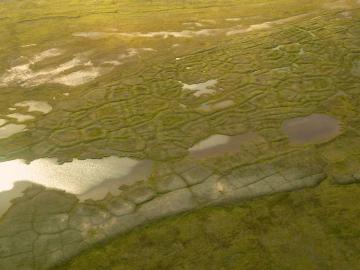
Filter News
Area of Research
- (-) Biology and Environment (63)
- (-) Supercomputing (131)
- Advanced Manufacturing (6)
- Building Technologies (2)
- Computational Biology (1)
- Computational Engineering (3)
- Computer Science (15)
- Electricity and Smart Grid (1)
- Energy Science (105)
- Energy Sciences (1)
- Functional Materials for Energy (1)
- Fusion and Fission (7)
- Fusion Energy (2)
- Isotopes (1)
- Materials (65)
- Materials for Computing (17)
- Mathematics (1)
- National Security (33)
- Neutron Science (19)
- Nuclear Science and Technology (3)
- Quantum information Science (8)
- Sensors and Controls (1)
News Topics
- (-) Computer Science (105)
- (-) Frontier (32)
- (-) Machine Learning (20)
- (-) Microscopy (16)
- (-) Polymers (4)
- (-) Security (6)
- 3-D Printing/Advanced Manufacturing (13)
- Advanced Reactors (2)
- Artificial Intelligence (41)
- Big Data (29)
- Bioenergy (50)
- Biology (76)
- Biomedical (28)
- Biotechnology (15)
- Buildings (6)
- Chemical Sciences (15)
- Clean Water (11)
- Composites (5)
- Coronavirus (22)
- Critical Materials (4)
- Cybersecurity (9)
- Energy Storage (11)
- Environment (105)
- Exascale Computing (28)
- Fusion (2)
- Grid (7)
- High-Performance Computing (56)
- Hydropower (8)
- Isotopes (3)
- Materials (24)
- Materials Science (22)
- Mathematics (5)
- Mercury (7)
- Molten Salt (1)
- Nanotechnology (16)
- National Security (9)
- Neutron Science (16)
- Nuclear Energy (5)
- Partnerships (6)
- Physics (9)
- Quantum Computing (20)
- Quantum Science (25)
- Simulation (26)
- Software (1)
- Space Exploration (3)
- Summit (47)
- Transportation (8)
Media Contacts

ORNL is teaming with the National Energy Technology Laboratory to jointly explore a range of technology innovations for carbon management and strategies for economic development and sustainable energy transitions in the Appalachian region.

ORNL researchers have identified specific proteins and amino acids that could control bioenergy plants’ ability to identify beneficial microbes that can enhance plant growth and storage of carbon in soils.

The Center for Bioenergy Innovation has been renewed by the Department of Energy as one of four bioenergy research centers across the nation to advance robust, economical production of plant-based fuels and chemicals.

A DNA editing tool adapted by Oak Ridge National Laboratory scientists makes engineering microbes for everything from bioenergy production to plastics recycling easier and faster.

Environmental scientists at ORNL have recently expanded collaborations with minority-serving institutions and historically Black colleges and universities across the nation to broaden the experiences and skills of student scientists while bringing fresh insights to the national lab’s missions.

Oak Ridge National Laboratory scientists set out to address one of the biggest uncertainties about how carbon-rich permafrost will respond to gradual sinking of the land surface as temperatures rise.

A study by Oak Ridge National Laboratory researchers has demonstrated how satellites could enable more efficient, secure quantum networks.

Hydrologist Jesús “Chucho” Gomez-Velez is in the right place at the right time with the right tools and colleagues to explain how the smallest processes within river corridors can have a tremendous impact on large-scale ecosystems.

Critical Materials Institute researchers at Oak Ridge National Laboratory and Arizona State University studied the mineral monazite, an important source of rare-earth elements, to enhance methods of recovering critical materials for energy, defense and manufacturing applications.

ORNL’s next major computing achievement could open a new universe of scientific possibilities accelerated by the primal forces at the heart of matter and energy.


